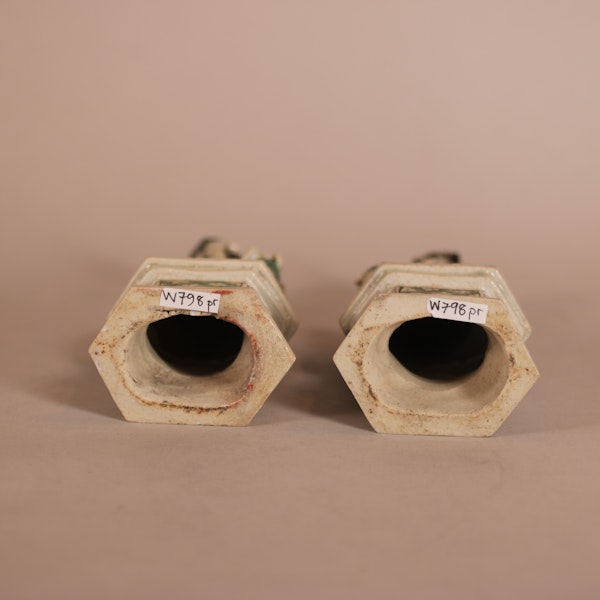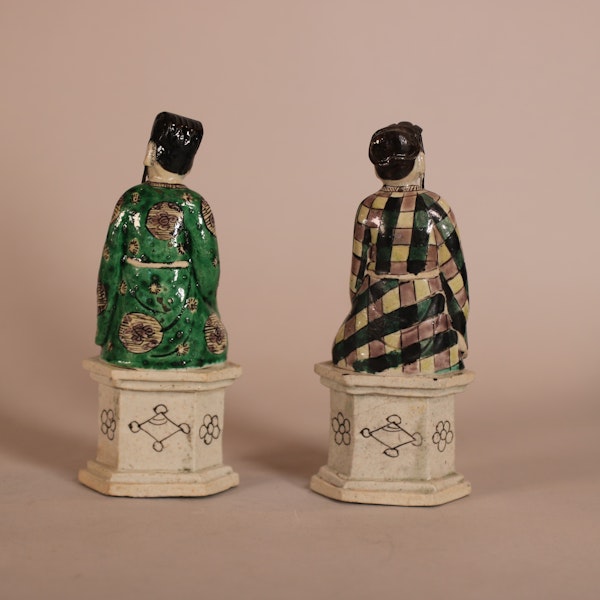Pair of famille verte Daoist immortal figures, Kangxi (1662-1722)
Pair of famille verte Daoist immortal figures, Kangxi (1662-1722)
POA
Description
Pair of famille verte Daoist immortal figures, Kangxi (1662-1722), each seated, with one knee raised and right foot protruding from the hem of his mantle, upon a hexagonal base with Daoist symbols including peaches and a solid lozenge, representing a mirror and symbolising protection against malevolent influences, against a green and yellow diaper pattern to the front of the base, the back left without enamel decoration; the first figure modelled as Cao Guojiu曹國舅, said to be related to a Song dynasty emperor in his mortal life, depicted in official robes of green with decorative roundels, a tall headdress and long hair and beard, holding ‘paiban’ (traditional Chinese clappers), the second figure depicting Lu Dongbin 呂洞賓, dressed in chequered robes of black, yellow, green and mauve with a flywhisk held in his right hand and a scholar's cap upon his head; dimensions: condition:
Notes:
The Eight Immortals are a legendary group of Daoist figures said to have lived during the Tang or Song dynasties, and appear as a group on artwork dating back to the Jin dynasty, though evidence survives suggesting that worship of individual Daoist immortal figures was prevalent during the Han. Lu Dongbin is considered to be the leader of the immortals, and is revered within the Daoist tradition as a scholar-poet in possession of great wisdom and compassion. He is associated with a historical figure, a Tang Dynasty scholar named Lu Yan who later attained immortality along with the other seven through spiritual cultivation and commitment to Daoist principles. He is also considered a patron of the martial arts and is invoked for protection and inspiration by practitioners of related disciplines. Meanwhile, Cao Guojiu is said to have been a member of the Song Imperial family before attaining immortality, and is commonly depicted dressed in his imperial robes, as seen here. According to legend, in his mortal life he opposed corruption and court and as a result was forced to live in isolated seclusion, eventually attaining immortality through years of cultivationand practice. The ‘paiban’ (traditional Chinese clappers) he holds in his hand reflect his role as the patron deity of the performing arts.
| item details | |
|---|---|
| Material and Technique | Moulded ceramic figures with with enamel decoration |
| Origin | Chinese |
Product REF: W798






